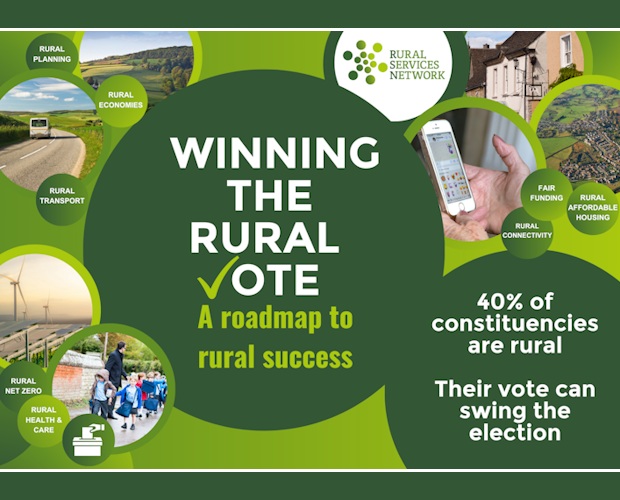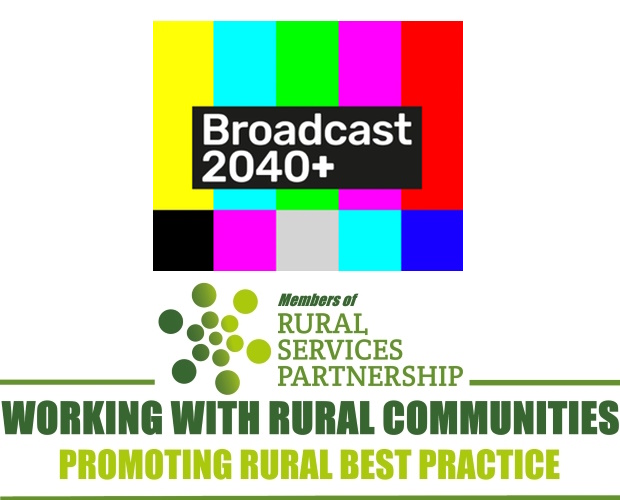T: 01822 851370 E: admin@sparse.gov.uk
Preserving Traditional TV Services: Vital for Rural Communities

In a world where digital connectivity often defines access to essential services, a recent report by Ernst & Young Global Limited, TV Distribution After 2034, has raised concerns about the future of TV distribution, particularly in rural areas. Despite ambitious government targets for broadband coverage, over 5.5 million UK households are predicted to be without high-speed broadband subscriptions by 2040. This poses a significant challenge to ensuring universal access to TV programming, especially for vulnerable groups like the elderly, disabled individuals, low-income households, and rural communities.
Despite the Government’s 99% broadband coverage goal for 2030, the report predicts that there will still be a significant gap in broadband uptake ten years later in 2040. The report demonstrates that unless action is taken to protect traditional free-to-air broadcast services there is a potential to exclude those who are least likely to take up a high-speed broadband subscription from TV programming including live sports, news, and entertainment.
The report’s statistical analysis identified the key barriers to broadband take-up and how this will impact access to universal TV services in 2040. Notably:
• Over 5.5m UK premises (18%) are predicted to be without a high-speed broadband subscription by 2040, despite the government’s commitment to 99% broadband coverage by 2030.
• The English regions with the highest proportion of premises without high-speed broadband in 2040 are predicted to be North East England (21%), Yorkshire & the Humber (20%), North West England (19%).
• The uptake of high-speed broadband is only set to increase by 10% between 2022 and 2040, with more than just connectivity being a barrier to individuals adopting high-speed broadband.
• Those forecast to be without high-speed broadband will disproportionally be vulnerable groups in society, such as the elderly, disabled and low-income households.
• Ofcom, cited in the House of Lords Report on Digital Exclusion (2023), says 31% of people aged 65+ do not currently use the internet at home.
• Ofcom reported that around one-in-ten households (2.4 million UK households) find it difficult to afford their broadband service (Ofcom Communications Affordability Tracker, October 2023). The Government’s current policy only guarantees broadcast TV services are protected until the early 2030s. The communications regulator OFCOM is currently undertaking a review as to whether this cut-off date should be extended.
The Broadcast 2040+ campaign is therefore calling on the Government to commit publicly to safeguarding traditional TV and radio services to 2040 and beyond. The Broadcast 2040+ campaign is therefore calling on the Government to commit publicly to safeguarding traditional TV and radio services to 2040 and beyond.
Kerry Booth, Chief Executive of the Rural Services Network:
"We welcome this report and continue to champion the Broadcast 2040+ Campaign’s work to safeguard the future of Broadcast TV and radio “In a world moving to ‘digital by default’ we need to ensure that we are not leaving anyone behind. As it stands, there is a risk that our rural residents with poor access to gigabit broadband connection, and poor mobile telephone connectivity, will be excluded from being able to watch television in their own homes. We must ensure that Government policy suits the needs of rural areas and doesn’t leave rural residents at a disadvantage."
Sources:
https://www.broadcast2040plus.org/_files/ugd/c12aae_f09b9b3bd981459b85d6409357cebb49.pdf
YOU MAY ALSO BE INTERESTED IN
SIGN UP TO OUR NEWSLETTER
Sign up to our newsletter to receive all the latest news and updates.








